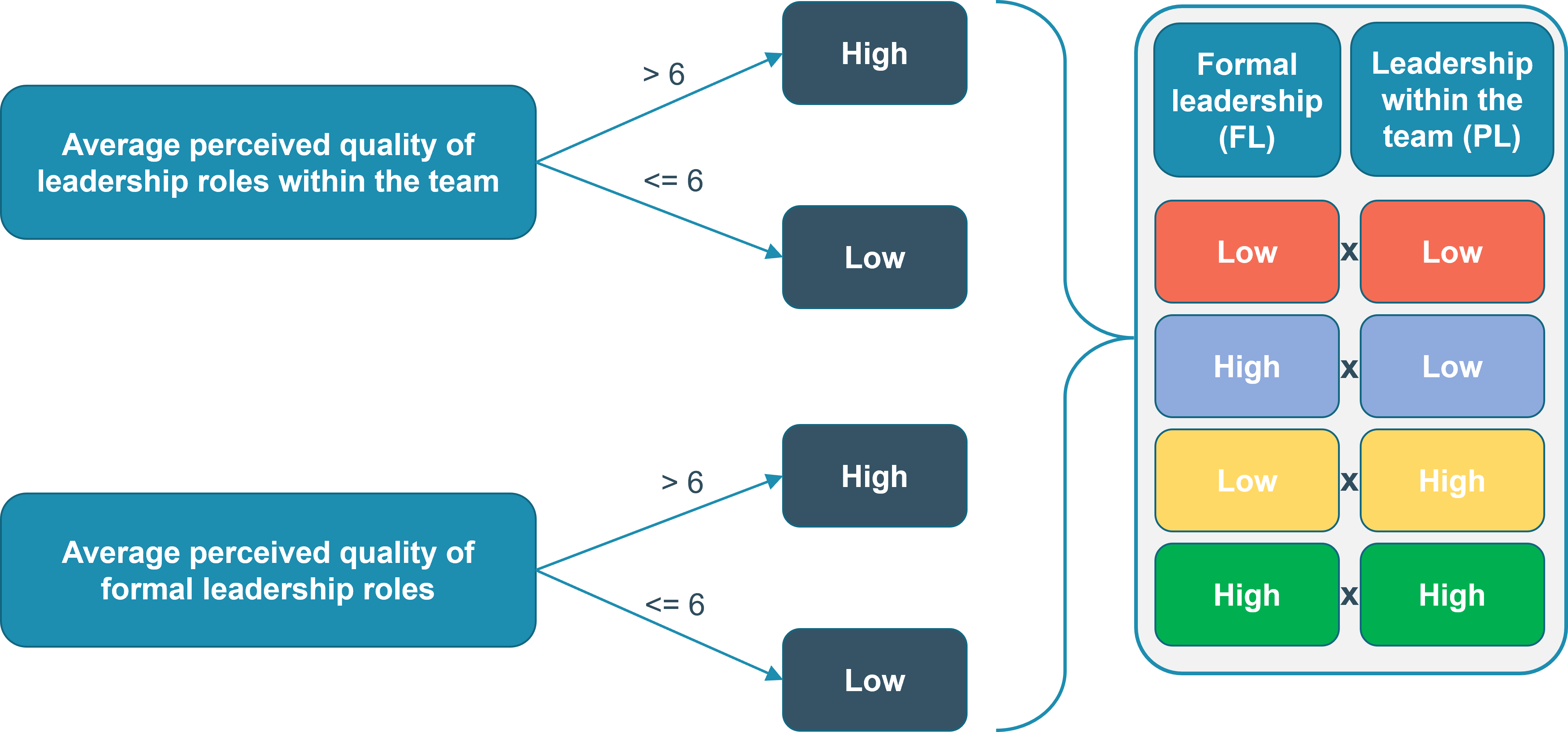Leadership in academic settings
Differential and combined contribution of formal and peer leaders
We conducted additional analyses to investigate the potential differential effects of having either a high-quality formal leader or high-quality peer leaders. Moreover, we sought to determine whether the combined presence of both leadership factors would yield even stronger outcomes.
Participants were categorised based on their perceived quality of peer leadership roles (averaged across all peer leadership roles) and their perceived quality of formal leadership roles (averaged across all formal leadership roles). Specifically, participants with an average perceived quality of leadership higher than 6 were assigned to the 'high' category, while those with an average perceived quality of 6 or lower were assigned to the 'low' category for each type of leadership. These classifications were then combined to create four distinct categories:
- Low x Low (red): indicating ‘low’ perceived formal leadership and ‘low’ perceived peer leadership
- High x Low (blue): indicating ‘high’ perceived formal leadership and ‘low’ perceived peer leadership
- Low x High (yellow): indicating ‘low’ perceived formal leadership and ‘high’ perceived peer leadership
- High x High (green): indicating ‘high’ perceived formal leadership and ‘high’ perceived peer leadership

The subsequent graph presents the results of the MANOVA analyses conducted on the aforementioned data. Each category is represented by a distinct colour, reflecting whether participants perceived formal leadership (FL) or peer leadership (PL) as high or low. The bars represent the average scores on the outcome measures for each category. Arrows are used to denote significant differences identified through the Games-Howell post-hoc tests, with the colour of the arrow corresponding to the category displaying the significant difference (at a significance level of p < .05).

These MANOVA analyses led to the following conclusions:
- Having either a strong formal leader or effective peer leaders within the team is of significant value for each of the outcomes, compared to when good leadership is missing.
- The combination of having both a high-quality formal leader and high-quality peer leaders was associated with the best outcomes.
